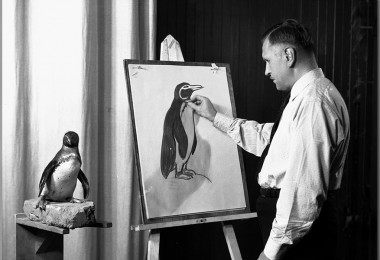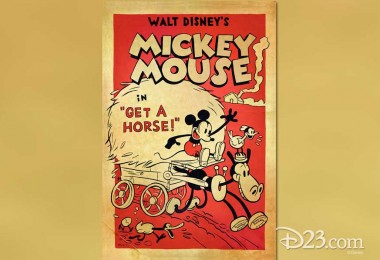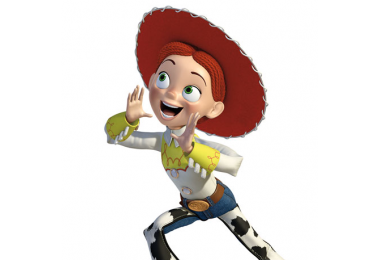
Nicholas, Wyandotte, Michigan
A: Albert Hurter was a sketch artist, who was constantly drawing, sketching, and doodling, so it is possible that there are drawings of his out there. As a tribute to Hurter after he died, Disney artists compiled a book of his drawings, entitled He Drew as He Pleased (Simon & Schuster, 1948). There is also some Hurter artwork in Didier Ghez’s new book They Drew as They Pleased: The Hidden Art of Disney’s Golden Age (Chronicle Books, 2015).

Avi, Irvine CA
A: For an answer, I went to the director of the cartoon, Lauren MacMullan. Here is her reply: "As the Mickey short was being made, I decided I wanted a title that sounded decidedly unmodern--as if if was named in 1928, not 2013. 'Get a Horse' is actually a phrase from the early days of the auto. As cars started venturing out of the city into the country, the newfangled contraptions would spook farmer's horses, who had never seen anything like it and often reacted badly. But the cars themselves often broke down, or had tire troubles; and when this happened, the farmers would ride by and make fun of the drivers by yelling, "Get a horse!" As the short has Mickey and Horace facing off against Pete and his car, I thought this would be a fine title."

Ashira, California
A: This is a fan’s theory, based on some evidence in the films, but it is a long shot.

Lori, Rochester, Michigan
A: Disney’s first Winnie the Pooh film was Winnie the Pooh and the Honey Tree in 1966. There would not have been Disney Pooh merchandise before that year. Our earliest Pooh merchandise was sold as an exclusive through Sears for several years.
Justin, Appling, Georgia
A: Those were the only ones released under the Disney name to be honored with Best Picture nominations. Other Disney-released films (Touchstone, Hollywood Pictures, and DreamWorks) nominated were Dead Poets Society, Quiz Show, The Insider, The Sixth Sense, The Help, and War Horse.
Pam, Las Vegas, Nevada
A: You would need to contact the Academy of Motion Picture Arts and Sciences. Disney did not have a photographer at the ceremonies.
Jasmine, Lowell, Arkansas
A: Walt also pioneered synchronized sound in animation (with Steamboat Willie). But his key accomplishments were not just in technology, but in story and artwork. He hired excellent writers and artists who were able to bring his ideas to life on the screen. He spent the necessary funds to train his artists, supply them with the best equipment, and give them the time they needed to come up with the highest quality product possible. He was gratified by the response from theater audiences, and by the multiple awards his films won.
Jewell, Redlands, California
A: Because it takes so long to make an animated feature, boys’ voices often change during production. For later recording sessions, the directors sometimes have to call upon other boys who sound the same as the voice actor in the original recordings. In this case, the two replacements were sons of the director, Wolfgang Reitherman.
Dennis, Alabama
A: Goofy and Wilbur was the first cartoon released as a Goofy cartoon, and perhaps that is what the posting meant. The character appeared in a 1938 book as Dippy the Goof, and he appeared in a number of Mickey Mouse cartoons after his debut in 1932, before the Goofy series began.
Maxi, Somerville, Massachusetts
A: The release years for the animated features in which each Princess appeared are: Snow White (1937), Cinderella (1950), Aurora (1959), Ariel (1989), Belle (1991), Jasmine (1992), Pocahontas (1995), Mulan (1998), Tiana (2009), and Rapunzel (2010). Soon to come is Princess Merida in Brave (2012).






